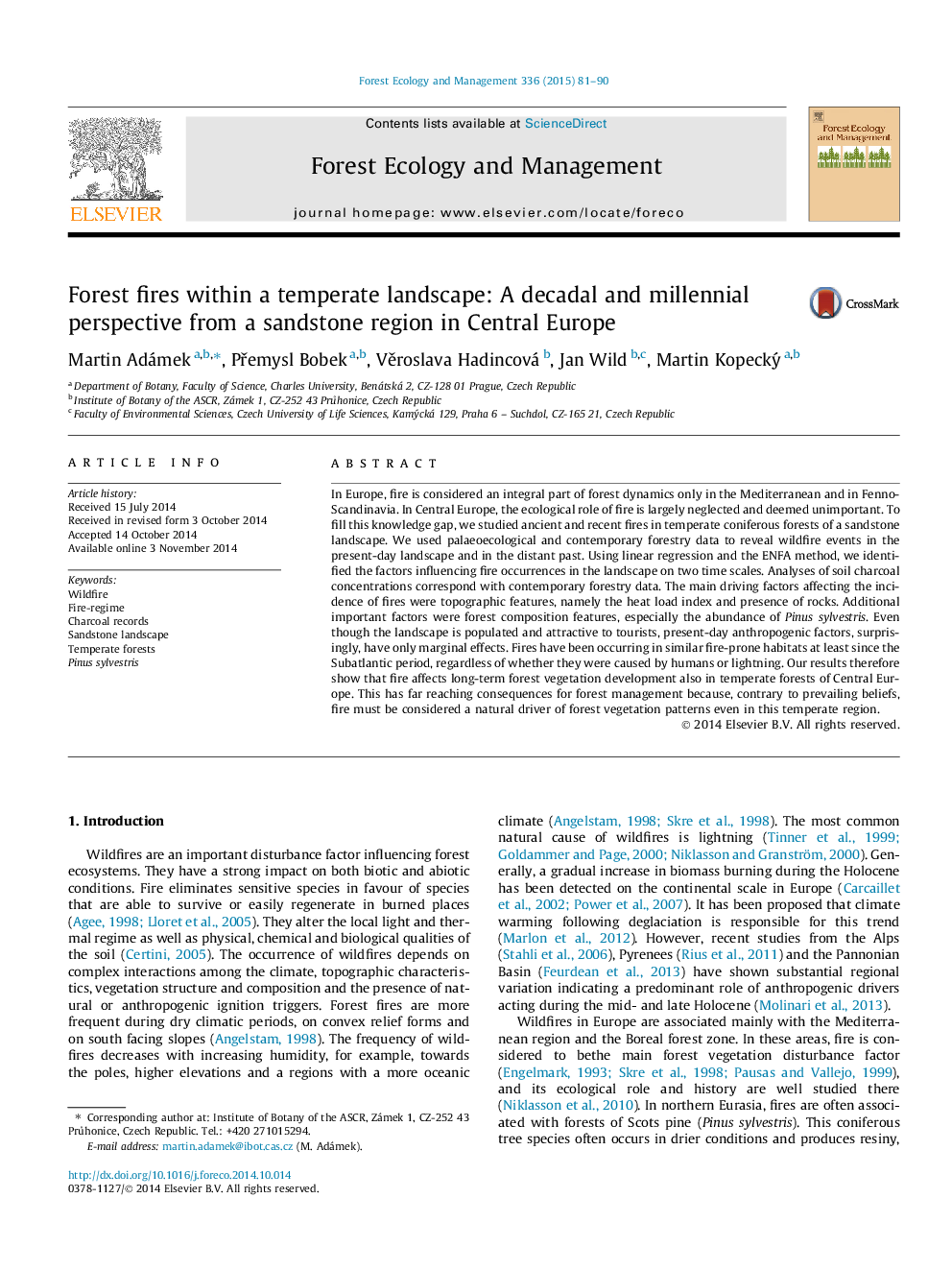| کد مقاله | کد نشریه | سال انتشار | مقاله انگلیسی | نسخه تمام متن |
|---|---|---|---|---|
| 86419 | 159187 | 2015 | 10 صفحه PDF | دانلود رایگان |
• We explored factors influencing wildfire occurrence in temperate European forests.
• Wildfire occurrence was driven mainly by the topography and vegetation composition.
• Anthropogenic factors have only marginal effect compared to the natural factors.
• Historical and recent fires were triggered by similar factors.
• We suppose long-term fire influence on vegetation of specific fire-prone sites.
In Europe, fire is considered an integral part of forest dynamics only in the Mediterranean and in Fenno-Scandinavia. In Central Europe, the ecological role of fire is largely neglected and deemed unimportant. To fill this knowledge gap, we studied ancient and recent fires in temperate coniferous forests of a sandstone landscape. We used palaeoecological and contemporary forestry data to reveal wildfire events in the present-day landscape and in the distant past. Using linear regression and the ENFA method, we identified the factors influencing fire occurrences in the landscape on two time scales. Analyses of soil charcoal concentrations correspond with contemporary forestry data. The main driving factors affecting the incidence of fires were topographic features, namely the heat load index and presence of rocks. Additional important factors were forest composition features, especially the abundance of Pinus sylvestris. Even though the landscape is populated and attractive to tourists, present-day anthropogenic factors, surprisingly, have only marginal effects. Fires have been occurring in similar fire-prone habitats at least since the Subatlantic period, regardless of whether they were caused by humans or lightning. Our results therefore show that fire affects long-term forest vegetation development also in temperate forests of Central Europe. This has far reaching consequences for forest management because, contrary to prevailing beliefs, fire must be considered a natural driver of forest vegetation patterns even in this temperate region.
Figure optionsDownload as PowerPoint slide
Journal: Forest Ecology and Management - Volume 336, 15 January 2015, Pages 81–90
